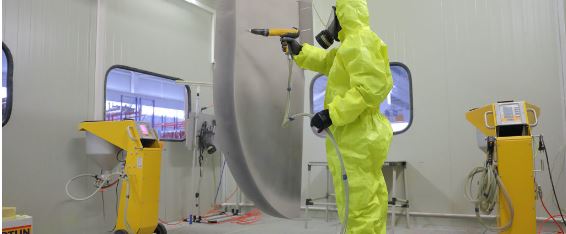In the realm of construction, maintenance, and DIY projects, epoxy and ISO polyurea coatings have become staples for their durability and versatility. However, there comes a time when these coatings need to be removed, whether for repair, renovation, or simply to change the aesthetic. This is where epoxy removers and ISO polyurea removers step in, offering efficient solutions to tackle these tough coatings. In this comprehensive guide, we delve into the world of epoxy and ISO polyurea removers, exploring their types, applications, benefits, and considerations.
Understanding Epoxy and ISO Polyurea Coatings
Before diving into the specifics of their removal, it’s essential to understand what epoxy and ISO polyurea coatings are and why they’re so popular.
Epoxy coatings are widely used in various industries due to their exceptional durability, chemical resistance, and adhesive properties. They are commonly applied to concrete floors, countertops, industrial equipment, and even art pieces for their protective and decorative qualities.
On the other hand, ISO polyurea coatings have gained recognition for their rapid curing time, high flexibility, and superior resistance to abrasion, chemicals, and weathering. They find applications in flooring, roofing, tank linings, and waterproofing.
The Need for Epoxy and ISO Polyurea Removers
While epoxy and ISO polyurea coatings offer numerous benefits, there are instances where their removal becomes necessary. This could be due to:
-
Damage or Wear: Over time, epoxy and ISO polyurea coatings may experience wear and tear, leading to cracks, delamination, or discoloration.
-
Renovation or Repairs: During renovation projects or repairs, existing coatings may need to be removed to apply new coatings or restore surfaces.
-
Change of Design: In aesthetic renovations, individuals might desire a different color or texture, necessitating the removal of the existing coatings.
Types of Epoxy and ISO Polyurea Removers
-
Chemical Removers: These removers contain powerful chemicals designed to break down the molecular bonds of epoxy and ISO polyurea coatings, facilitating their removal. They are available in solvent-based or water-based formulations, catering to different environmental and safety requirements.
-
Mechanical Methods: Mechanical removal techniques involve using equipment such as floor grinders, shot blasters, or sanders to physically abrade the coatings from the surface. These methods are effective for thick or stubborn coatings but may require more time and effort.
-
Thermal Removers: Thermal removal techniques utilize heat to soften the epoxy or ISO polyurea coatings, making them easier to scrape or peel off. This method is suitable for thin coatings and can be less aggressive compared to chemical or mechanical methods.
Benefits of Epoxy and ISO Polyurea Removers
-
Efficiency: Epoxy and ISO polyurea removers offer fast and efficient removal of coatings, saving time and labor costs compared to manual scraping or sanding.
-
Versatility: These removers are compatible with various surfaces, including concrete, metal, wood, and plastics, making them suitable for a wide range of applications.
-
Safety: Many modern epoxy and ISO polyurea removers are formulated to be environmentally friendly, with low volatile organic compound (VOC) emissions and non-toxic ingredients, ensuring a safer working environment.
-
Precision: Chemical removers can be applied selectively to target specific areas or coatings, allowing for precise removal without damaging the underlying substrate.
Considerations for Epoxy and ISO Polyurea Removal
-
Surface Preparation: Proper surface preparation is crucial for successful coating removal. Surfaces should be clean, dry, and free from contaminants to ensure optimal adhesion of new coatings.
-
Safety Precautions: When using chemical removers, appropriate personal protective equipment (PPE) such as gloves, goggles, and respirators should be worn to minimize exposure to harmful fumes or skin irritation.
-
Environmental Impact: Consider the environmental impact of the chosen removal method, opting for eco-friendly products and practices whenever possible to minimize harm to the ecosystem.
-
Professional Assistance: For large-scale projects or complex coatings, it may be advisable to seek the expertise of professional contractors experienced in epoxy and ISO polyurea removal to ensure efficient and safe completion.
Conclusion
In conclusion, epoxy remover and ISO polyurea removers play vital roles in the maintenance, renovation, and repair of surfaces coated with epoxy and ISO polyurea coatings. By understanding the types, benefits, and considerations associated with these removers, individuals and professionals can effectively tackle coating removal projects with confidence and efficiency, achieving optimal results while prioritizing safety and environmental responsibility. Whether it’s reviving worn-out floors, refreshing outdated designs, or preparing surfaces for new coatings, the right remover is key to unlocking the potential beneath the layers.


